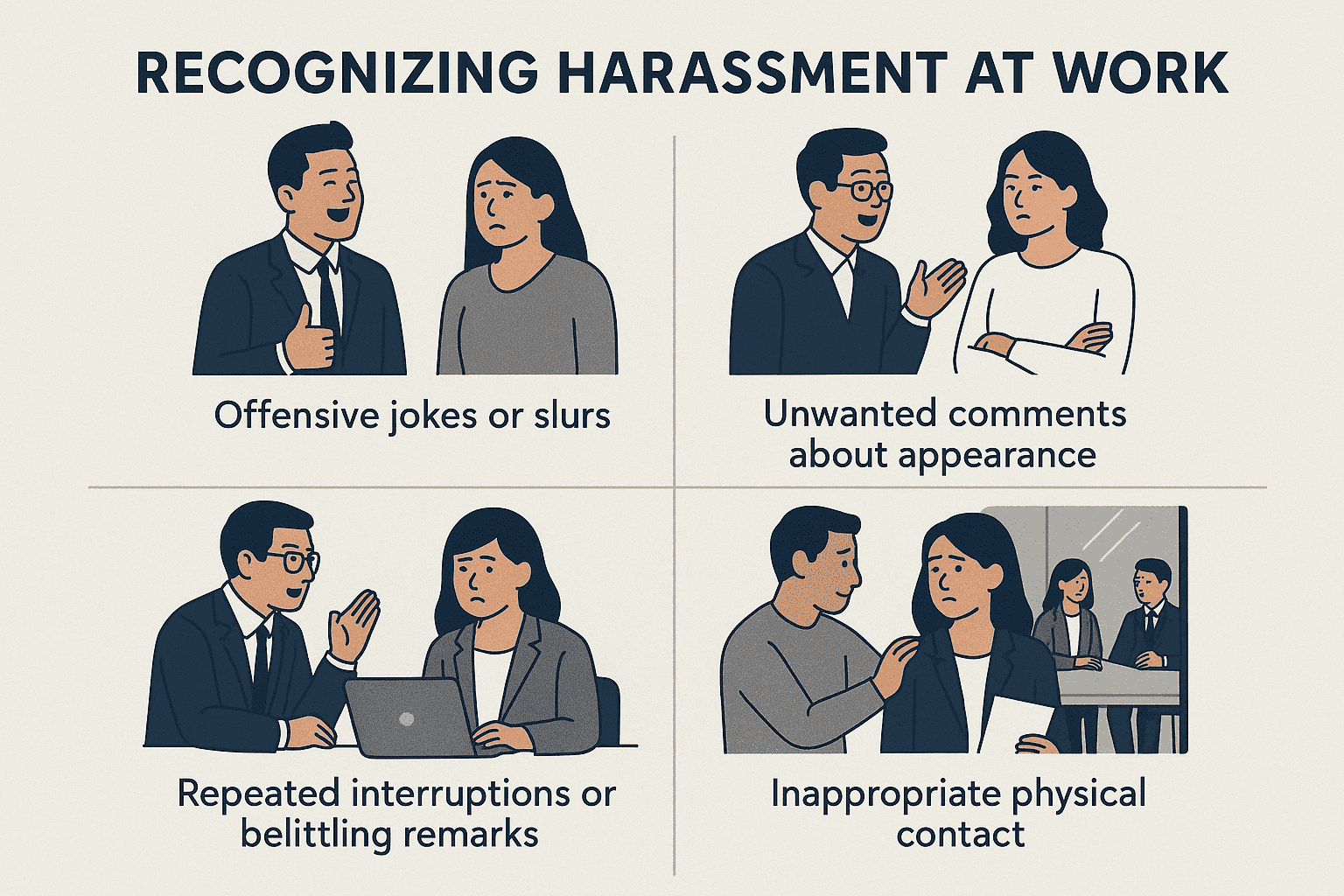Harassment in the Workplace: Recognizing Its Impact on Mental Health

Many people have experienced uncomfortable or negative interactions at work, but not all difficult behavior is legally considered harassment. Harassment in the workplace has a specific meaning: unwelcome conduct based on a protected characteristic—such as sex, race, age, sexual identity/orientation, religion, or disability—that is severe or pervasive enough to create a hostile, intimidating, or offensive work environment.
This can take many forms. It may involve sexual comments, racial slurs, offensive jokes, or repeated insults directed at someone’s identity. Sometimes harassment is obvious, such as inappropriate physical contact. Other times, it is subtle, like exclusion, microaggressions, or persistent belittling remarks. What matters is the effect: the behavior makes it harder for the person to feel safe, respected, and able to do their job.
As a therapist, I often hear from clients who feel trapped in environments where harassment has gone unchecked. The stress they carry home each night can erode their confidence, harm their relationships, and even affect their physical health.
Harassment vs. General Workplace Conflict
It’s important to distinguish between harassment and more general workplace conflict. Not every rude comment or disagreement qualifies. For example, a manager being overly strict or a colleague occasionally interrupting you may be unpleasant, but these behaviors don’t necessarily meet the definition of harassment.
By contrast, harassment involves a pattern—or sometimes even a single severe incident—that targets someone because of their identity. The difference matters because it determines whether legal protections apply, and also helps individuals understand when to seek HR or legal support.
At the same time, even when behavior does not meet the legal threshold, it can still be deeply harmful. Workplace bullying or incivility can contribute to stress, burnout, and emotional exhaustion. So while it is important to be precise with definitions, it’s equally important to acknowledge the real emotional toll of toxic work environments.

The Mental Health Consequences
The emotional impact of harassment in the workplace can be profound. Many people experience:
- Anxiety and fear: Constantly worrying about future interactions or anticipating negative treatment.
- Depression: Feeling hopeless, worthless, or drained by ongoing hostility.
- Trauma responses: Reliving incidents, avoiding certain places or people, and difficulty sleeping.
- Loss of self-esteem: Internalizing the harassment and questioning one’s own abilities.
These struggles don’t stay at the office. They often spill into personal relationships, making it harder to connect with loved ones, concentrate at home, or relax on weekends. Over time, the cumulative stress of harassment can significantly affect both mental and physical health.
Steps Toward a Safer Environment
Organizations have a responsibility to protect employees. Best practices include:
- Clear policies that define harassment and outline consequences.
- Training programs that educate staff and leadership about respectful workplace behavior.
- Confidential reporting channels so employees feel safe raising concerns.
- Consistent enforcement to show that rules apply to everyone, regardless of seniority.
When companies prioritize respect, they don’t just prevent legal issues—they build a culture where people feel valued and supported. This fosters productivity, teamwork, and long-term employee well-being.
What You Can Do if You’re Experiencing Harassment
If you are facing harassment in the workplace, know that you are not alone—and that the responsibility lies with the perpetrator, not you. Some practical steps include:
- Document everything. Keep records of dates, times, what was said or done, and any witnesses.
- Review your rights. Familiarize yourself with your company’s policies and, if possible, local employment laws.
- Seek support. Talking with trusted colleagues, friends, or family can reduce feelings of isolation.
- Report it. If you feel safe, bring concerns to HR or management. Having documentation helps.
- Care for your mental health. Therapy can provide coping strategies, validation, and tools for resilience.
Taking action can be daunting, especially if power dynamics make you fear retaliation. But even if the external situation is difficult to change right away, strengthening your internal coping skills can help you regain a sense of stability.

Healing and Moving Forward
Recovering from harassment takes time. For some, simply leaving a toxic environment brings relief. For others, the experience lingers and requires ongoing support. Therapy can help unpack the emotional weight, challenge negative self-beliefs, and rebuild confidence.
Healing is not about forgetting what happened—it’s about reclaiming your sense of worth and safety. It’s about moving from survival mode back into growth, where you can pursue your goals without the constant shadow of hostility.
Closing Thoughts
Harassment in the workplace is more than just an HR issue—it’s a human issue with real psychological consequences. By understanding what qualifies as harassment, recognizing its impact, and taking steps to address it, we can begin to build safer, healthier work environments.
If you are struggling with the effects of workplace harassment, you don’t have to carry that burden alone. Reaching out for support can be the first step toward healing. I invite you to connect with me to talk about what you are experiencing—together, we can explore strategies to restore balance, build resilience, and help you feel safe and respected again.